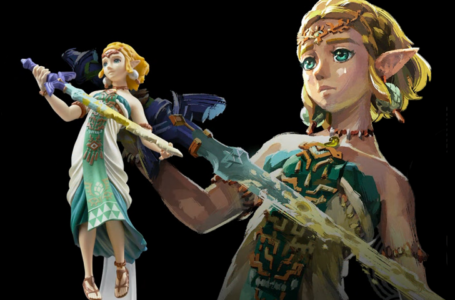Dungeon and Gravestone is a dangerously addictive take on the Mystery Dungeon formula
Dungeon and Gravestone is one of those Japanese games that has been around for a good few years — it originated as an iOS game in 2016 — but which has only recently been fully localised for English-speaking audiences. And, judging by the amount of time I spent glued to this game while evaluating it for the purposes of this article — it’s very much a case of “better late than never”.
In Dungeon and Gravestone, you start by rising from your grave as a husk. You’re not really given any time to come to terms with your current predicament, though, as you’re almost immediately told to go delve into the friendly neighbourhood dungeon. Thankfully, you’re also provided with a new body to make adventuring a little more straightforward, since husks are not particularly known for their durability.
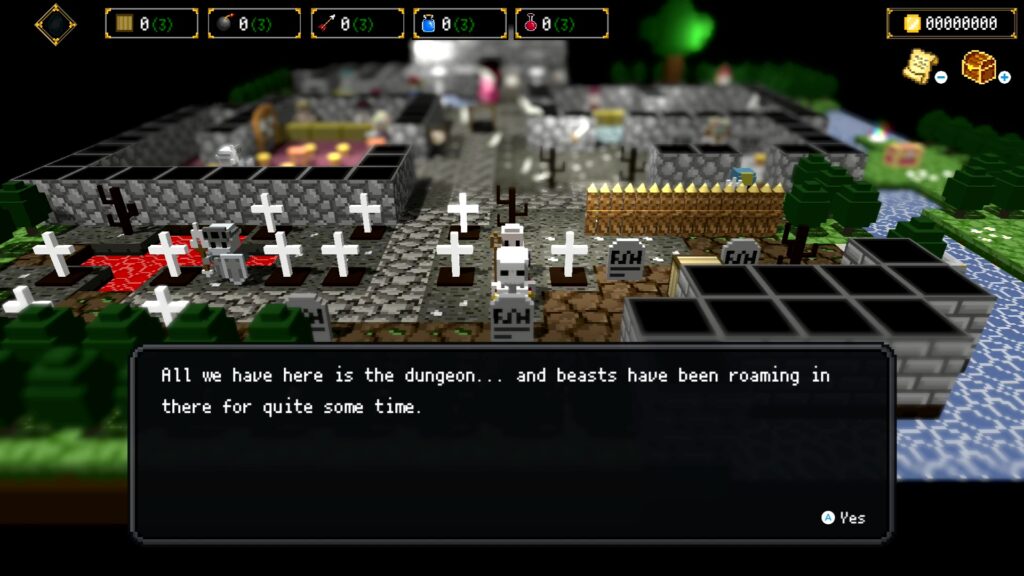
Yes, Dungeon and Gravestone is not a game you come to for plot — though there are some interesting hints of background lore that become apparent as you play. Rather, this is a game that is all about enjoying the thrill of exploring randomly generated dungeons and seeing how far you can get on each new run.
We’re firmly in roguelike territory here, then — specifically, the distinctive Japanese “Mystery Dungeon” tradition — but with some interesting twists on the formula. The most notable way in which Dungeon and Gravestone distinguishes itself is in the fact that it unfolds in real time rather than being turn-based; while enemies move somewhat “rhythmically” when they haven’t seen you, things can easily become quite frantic once combat begins.
That’s not all, though. Rather than each level of the dungeon being a sprawling labyrinth that requires lots of exploration, you’ll find that each floor tends to be rather small, neat and self-contained. And rather than simply tasking you with finding a path to the exit, most floors contain some lightweight puzzling elements, tasking you with flipping switches (sometimes by firing arrows through gates) and opening doors to clear your route to the next level.
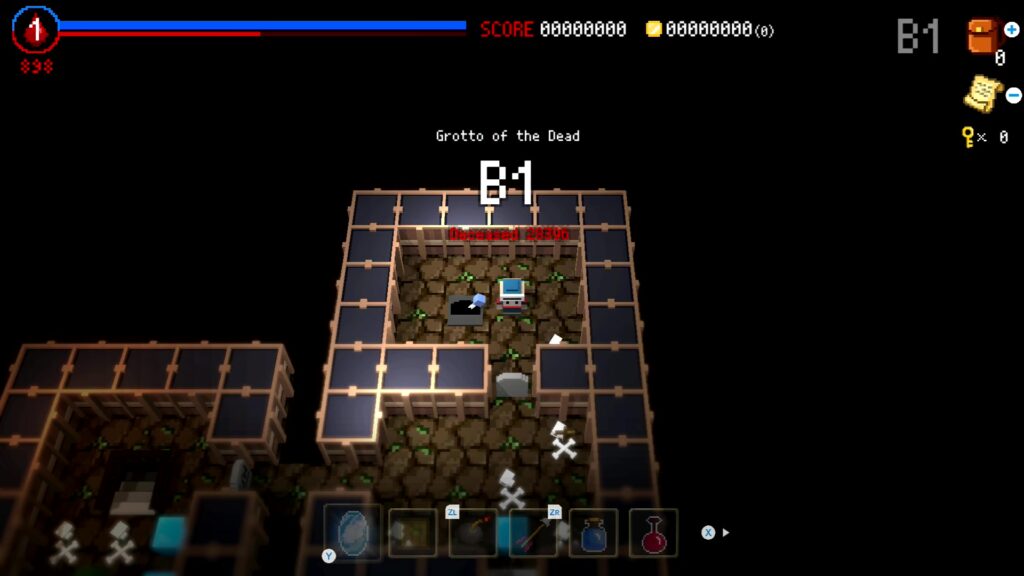
What’s really nice about the design of Dungeon and Gravestone is that although the floors are randomly generated, part of the procedural generation process involves the floor generating all the things you need to complete the challenge ahead of you. For example, in the aforementioned case of a floor where you’ll need to shoot an arrow through a gate in order to flip a switch, there will definitely be at least one arrow lying around for you to pick up in case you haven’t got one.
You can also improvise to a certain extent. One of the items you can use is a Zelda-style bomb, which is strong enough to completely obliterate most walls in the dungeon. Using these, it’s possible to just blast your way through obstacles that you otherwise can’t find a way around; for example, if there’s a locked door in your path and you don’t have a key, there’s nothing stopping you just blowing out the walls on either side of it and getting through that way.
This side of things is emphasised by the bonus levels known as “Landings” that randomly occur during your dungeon runs. Occasionally you’ll encounter a “tear in space-time” and be able to jump in; this will take you to one of several preconstructed Landings, which each contains a puzzle with a set solution — and, again, all the tools you need to complete that puzzle.
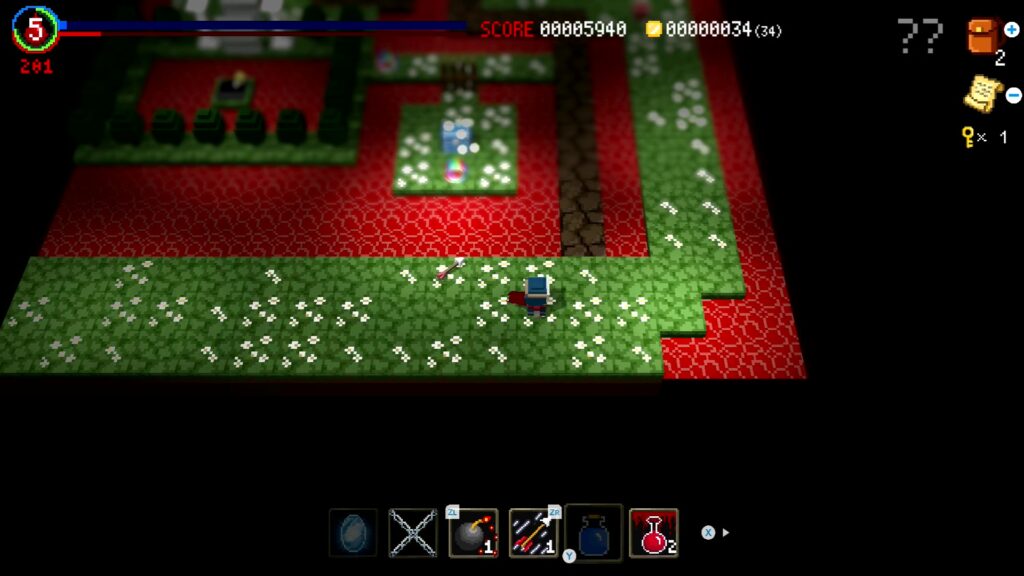
Successfully completing a Landing puzzle will reward you with treasure; on the other hand, it is possible to “fail” these puzzles and get yourself into an unwinnable situation. In these cases, you can simply “Give Up” and proceed to the next main floor of the dungeon; you’ll lose any items you acquired in the Landing if you take this approach.
There’s also a time pressure present throughout the game in the form of your ever-declining blood supply. This can generally be topped up at the start of each new floor, but in situations where you need to spend time thinking — such as the puzzles of the Landings — you’ll need to work quickly to ensure that you don’t expire due to simply hanging around for too long.
As this mechanic might suggest, in true roguelike tradition, there’s a strong risk versus reward element in Dungeon and Gravestone. Fall in the dungeon and you’ll lose all the items you acquired in that run — though how far you got through the dungeon can affect the form the town you visit between runs takes. In other words, get far enough, even if you fail, and you may find yourself able to purchase better weapons and armour, which will in turn make getting deeper into the dungeon a little easier on subsequent runs.
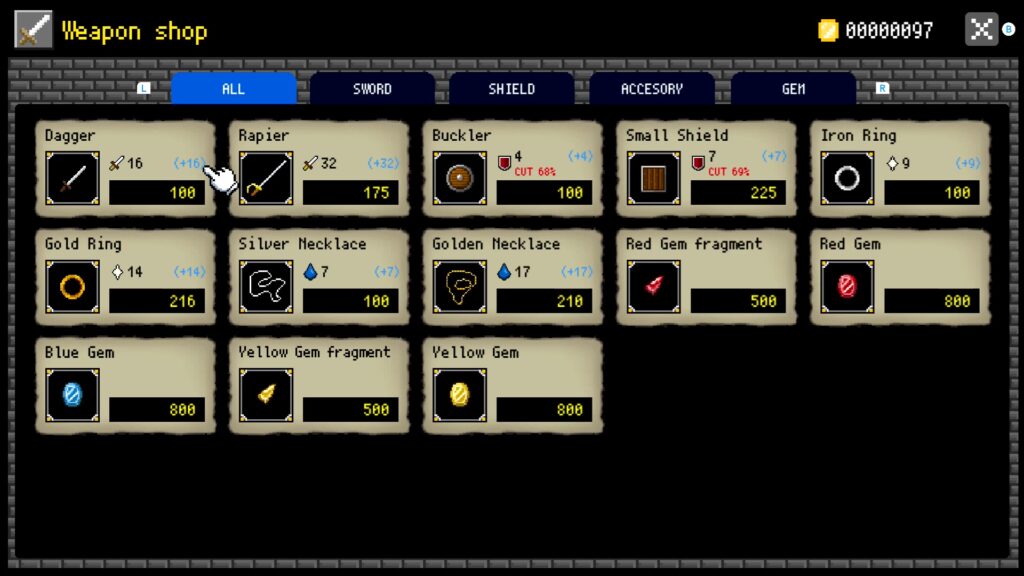
And despite the fact that you lose the gold you found in the dungeon when you die, you can still earn quite a substantial amount of money from the quests that are posted in the town, which usually involve either killing set numbers of monsters or acquiring various resources. Many of these quests reward you with money, but some will also provide you with mechanical benefits such as increases to your inventory size.
Dungeon and Gravestone is one of those games that the more you play, the more it becomes clear that it’s absolutely full of hidden mechanics to discover — and that this is the kind of game where you’re expected to explore and figure out a lot of things for yourself, since you barely get any tutorial messages even right when you first start the game.
This is honestly quite refreshing these days, particularly bearing in mind Dungeon and Gravestone’s origins as a mobile game. In the mobile sphere, it’s extremely common for tutorials to be long, drawn-out and boring, filled with big patronising arrows telling you where to click next, even if it’s massively obvious. For Dungeon and Gravestone to completely eschew that is actually quite pleasant — though obviously this does make the game a little less accessible to those who haven’t tried a game like this before.
There are lots of passive skills to unlock over your time with the game, as well as plenty of weapons, items and monsters to discover. This is very much not a game that you “finish”, but rather one that you keep playing to see how you can improve over time. And that really makes this a great game to have on the backburner for when you just feel like enjoying yourself for a few minutes.
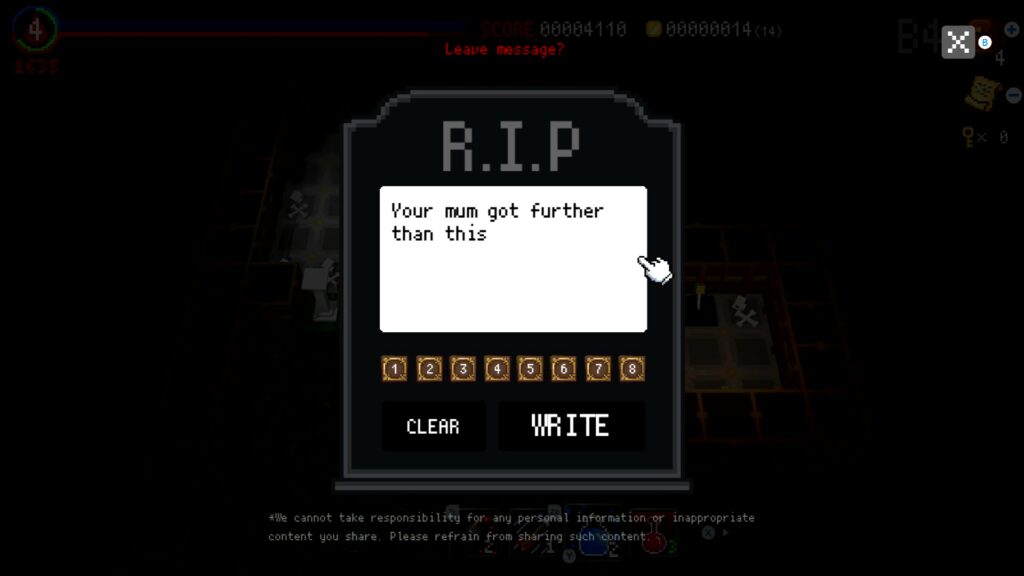
There’s also an optional online component to Dungeon and Gravestone, and it really adds to the experience. Not only are there leaderboards tracking both the deepest depth you reached and the score you managed to attain along the way, but every time you die, you have the option to write your own custom message on a gravestone, which will randomly pop up for both you and other players when they return to that floor.
If you’re not feeling creative, there are a series of default messages you can post, but the real appeal is being able to type whatever you want. This isn’t Souls-style piecing messages together phrase by phrase; this is full-on type anything you feel like. It’s not clear if there’s any sort of built-in filtering in place — the game’s messaging suggests it’s your own responsibility to not post anything inappropriate or personally identifying — but during my time playing the game I didn’t see any offensive messages pop up.
The nice thing about the gravestone messages is that there’s already evidence of people genuinely wanting to help one another out with the challenges by leaving useful tips on their gravestones. Then there’s some idiot who keeps posting quotes from Full Metal Daemon Muramasa and Toast of London. I guess we’ll never know the identity of that mystery adventurer. Nyehehehe.
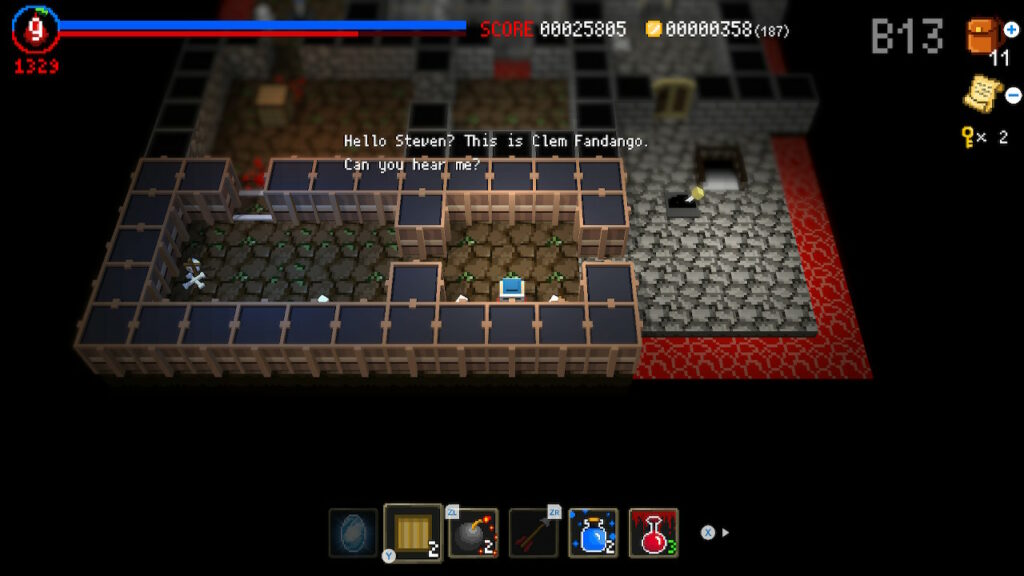
Ahem. Anyway, Dungeon and Gravestone is a good time, and has the potential to become really addictive with its solid pacing and varied challenges. Its voxel-style characters and environments coupled with a fun tilt-shift effect provides a nice “toy-like” feel to the entire adventure, and the arcade-style scoring system and online features provide plenty of replayability. This is definitely a great game to have handy on your Switch for when you fancy a quick bit of adventuring; its short-form play sessions make it ideal for play on the go, but there’s enough substance here to keep you busy for a very long time indeed.
Dungeon and Gravestone is available now for PC via Steam, Nintendo Switch, PlayStation 4/5 and Xbox One.
Join The Discussion
Rice Digital Discord
Rice Digital Twitter
Rice Digital Facebook
Or write us a letter for the Rice Digital Friday Letters Page by clicking here!
Disclosure: Some links in this article may be affiliate links, which means we may earn a small commission if you make a purchase after clicking on them. This is at no additional cost to you and helps support Rice Digital!
- Letter from the Editor: passing the torch - June 30, 2023
- Super Woden GP 2 is looking promising - June 30, 2023
- Inti Creates is making a 32 bit-style Love Live action platformer - June 26, 2023






